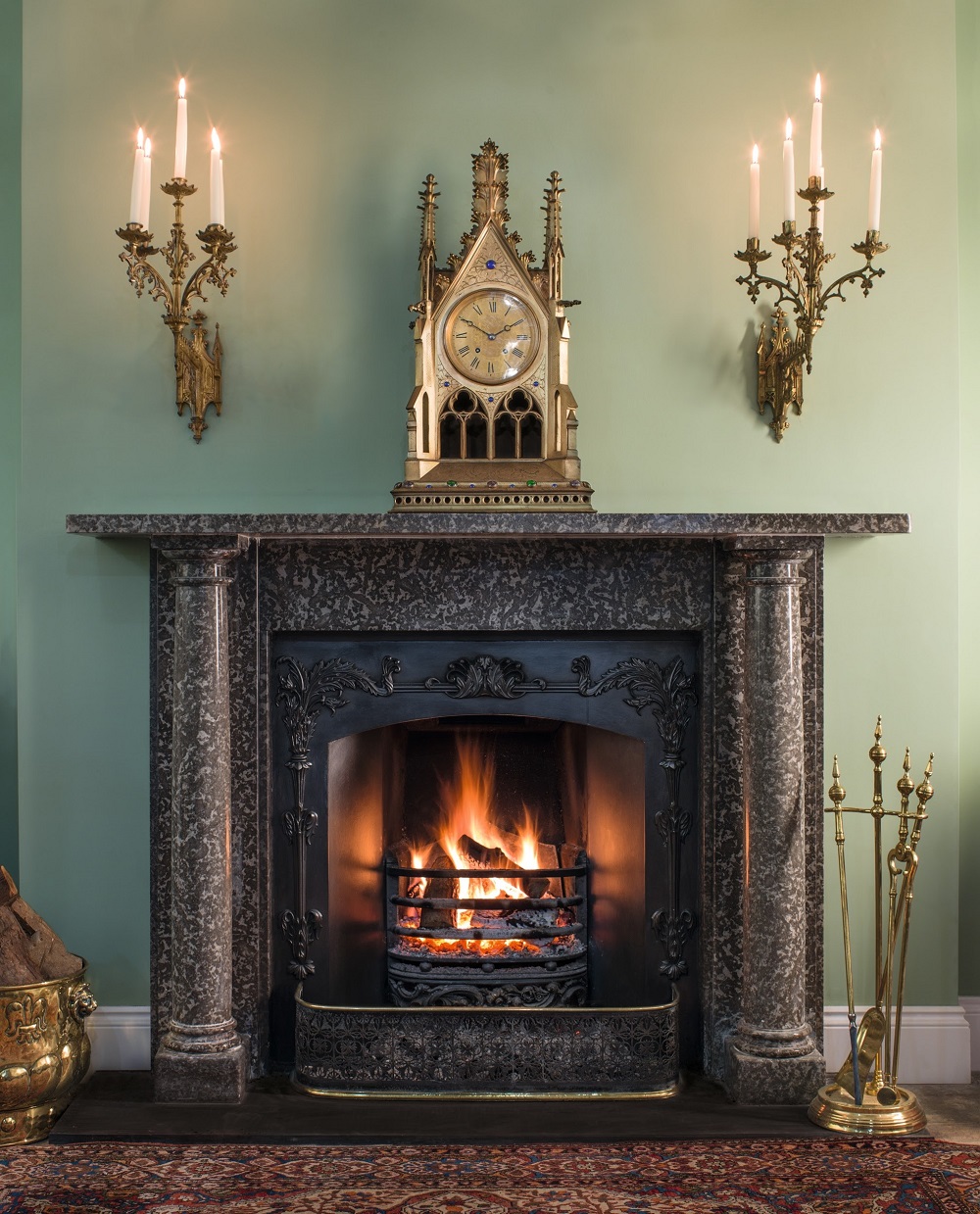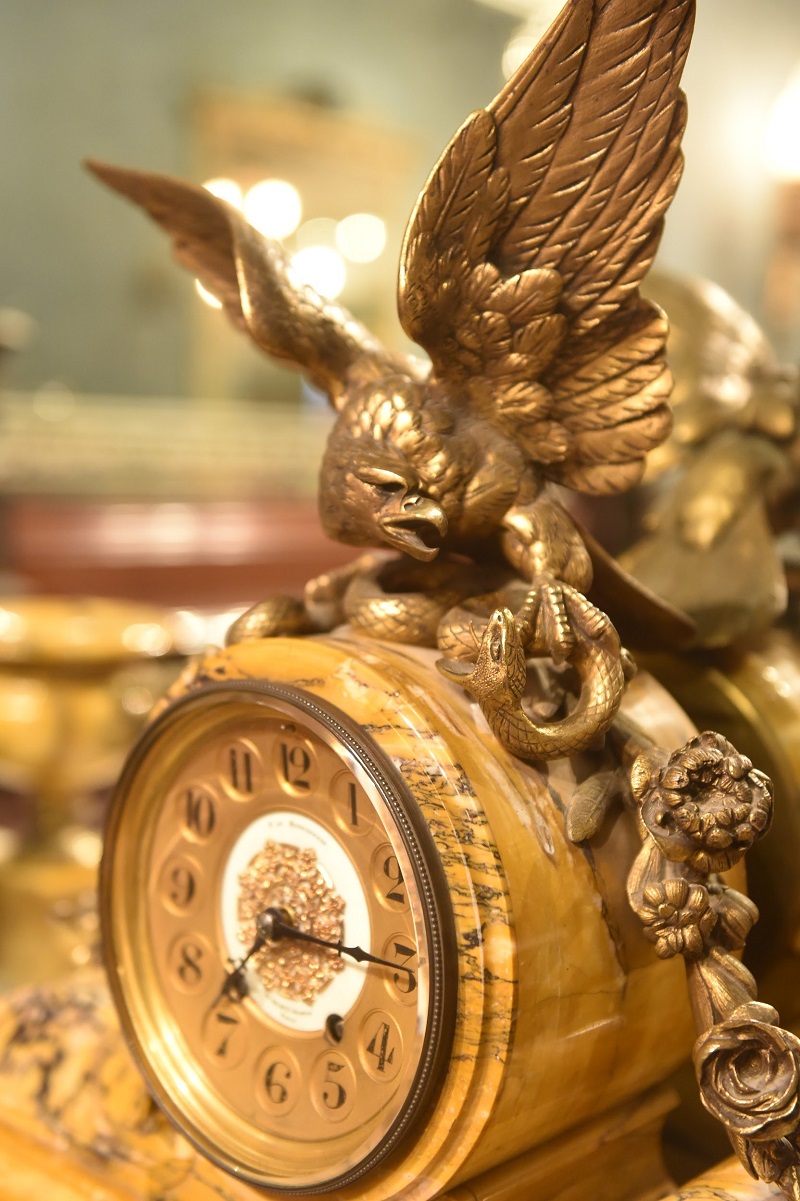There is a vast array of different types of clocks - from the very first clocks to 20th Century wristwatches, antique clocks can tell us a lot about the cultures they came from.
In this article we’ll delve into the fascinating history of different types of clocks through the ages.

×
Ancient civilisations and the first clocks
Although the movement of the sun has always served as a natural marker of the passage of time, it is only relatively recently in human existence that we have been able to measure time with any accuracy.
Sundials were among the first types of clocks. The ancient Egyptians started using obelisks to measure the sun’s shadow as early as 3,500 BC. They developed water clocks, which were also used in Babylon, ancient Greece, Persia, Mesopotamia, India and ancient China.
Other types of clocks included the timestick, used in India, Tibet and Persia, and the candle clock, used in ancient Japan, ancient China, Mesopotamia and England.
The dawn of the mechanical clock
The first fully mechanical clocks were developed by Christian monks
The ancient Greeks, Romans and Chinese created early mechanical clocks by continuing to develop water clocks to make them more accurate. Islamic civilisation is believed to have advanced water clock design further using engineering, with a geared water clock invented in the 11th Century in Islamic Iberia.
The first fully mechanical clocks were developed by Christian monks in 14th Century medieval Europe. The clocks were installed in monasteries to coordinate prayer and work schedules.
These early clocks used a complicated system of pulleys and weights to operate a striking mechanism. They were installed in churches and town halls, making timekeeping a public activity.
A Renaissance revolution in timekeeping
The Renaissance period saw a huge leap forward in the types of clocks available. The invention of the spring mechanism in the 15th Century revolutionised clockmaking, enabling the development of smaller, more portable clocks.
European clockmaking flourished throughout the 15th Century and into the 16th Century. It was now possible to have a clock at home - if you could afford it.
Types of clocks including wall clocks, tabletop clocks and mantel clocks became incredibly popular with the Renaissance nobility. Domestic clocks became a symbol of luxury, status and wealth.

The invention of the pendulum clock
The 17th Century saw another huge innovation in clockmaking with the introduction of pendulum clocks.
Inspired by the work of Galileo, Dutch scientist Christiaan Huygens determined the mathematical formula relating pendulum length to time and invented the first pendulum clock in 1657. This increased timekeeping accuracy to within 15 seconds in a day.
The longcase clock - better known as the grandfather clock - was created to house the pendulum mechanism. Clock faces began to utilise enamel and hand-painted ceramics, and clock cases to be made of wood.
Grandfather clocks were an instant hit with the European nobility, and are still among the most popular types of European clock today
Grandfather clocks were an instant hit with the European nobility
Decoration and innovation in the 18th Century
Clockmaking technology continued to advance throughout the 18th Century, with clocks becoming increasingly accurate and complex.
They also became more decorative. European clockmakers developed techniques for decorating clocks ornately with porcelain and ormolu, and clocks became valued as much for their looks as for their practical use.
For more information about antique clock makers' marks, read our blog.
The arrival of the pocket watch
In 1675, Huygens and English scientist Robert Hooke invented the spiral balance spring, or hairspring. This was a crucial step forward as it enabled the creation of accurate pocket watches for the first time.
Renowned English clockmaker Thomas Tompion was among the first to successfully use this technology in pocket watches. He augmented it with the introduction of the minute hand to create the configuration we know today.
Pocket watch technology developed throughout the 18th Century, coinciding with a trend for small, round watches that could fit in a waistcoat pocket.

19th Century advances in clockmaking
Scottish clockmaker Alexander Bain was the first to patent an electric clock in 1840
Clockmaking innovations continued throughout the 19th Century, with clocks becoming ever more portable and accurate.
The first carriage clocks were invented in the early 19th Century in France. These were small clocks designed for travelling, usually with a plain or gilt-brass case with a carrying handle, and often set with glass panels.
Scottish clockmaker Alexander Bain was the first to patent an electric clock in 1840. Mass production of pocket watches began at the British Watch Company in 1843, but it was in the US that this process really took off.
Clockmaking represented the most advanced technology of the day, and European high society was so fascinated by it that many of the most renowned craftspeople of the time turned their hand to it.
Types of clocks in the modern era
The end of the 19th Century saw the introduction of the wristwatch. These originated as bracelets worn exclusively by women, while men continued to use pocket watches into the 20th Century.
Electric watches were pioneered in the 1950s, quickly followed by the quartz watch. Now, watches and other personal timekeeping devices are ubiquitous.
Thanks to modern clocks, telling the time has become so commonplace that it’s hard to imagine life without it - yet antique clocks are a beautiful reminder of the journey we’ve been on to arrive at this point.
Westland London offers a selection of antique clocks, including traditional styles and more modern designs. If you have any other questions about the history of clocks or other antiques, get in touch with us today - we’d be happy to help!